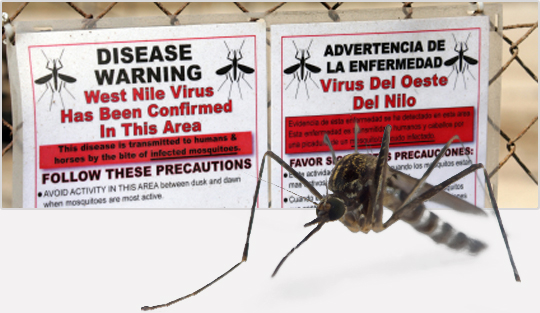
Mosquitoes are the most significant vector of disease in history and are responsible for more human deaths than any other animal. The mosquito is now breeding in new sites and readily adapting to urban life. In recent years, the media has significantly
While the pest professional can significantly impact a mosquito population, it is not feasible to promise a customer that he will never again experience another mosquito bite, or that a customer or employee will never be infected with a mosquito-borne disease. With this control program, it is Truly Nolen’s goal to reduce the customer’s mosquito population by 75%.
INSPECTION begins with a customer interview, followed by a thorough visual inspection for pest IDENTIFICATION and DETERMINATION of a course of action. He focuses on a 100 foot radius from the bite site, searching for conditions conducive such as:
- Stagnant water – Uncirculated lake, pond, fountain, retention basin, etc.
- Moisture conditions – Tree wells & holes, flowerbeds, plant catch plates, rock holes, gutters, sprinkler heads, shady areas, etc.
- Resting sites – Vertical or inverted surfaces protected from the wind and providing higher levels of moisture, such as a patio area, the bottom of the leaves for dense vegetation next to a structure, under a building eave, etc.
The pest professional makes thorough notes of all findings and always invites the customer to participate in the inspection process. He then develops a graph and site plan that outlines his findings.
Exterior
- Resting Site Treatment Using a power sprayer with a fine droplet pattern, the technician applies a pyrethrum product to treat protected vertical/inverted surfaces, dense vegetation, etc.
- Light Site Treatment He treats post bite sites (within 10 feet of the bite zone) and up 3-5 feet from ground level using a micro-encapsulated pyrethrum product with a B&G or backpack sprayer.
- Moisture Area Treatment Options – Larvicide & Pupicide Application Options may be rotated to ensure the program’s success.
Option #1 The tech applies small amounts of an IGR based granule with
a bulb duster (1/2 lb. per 1,000 square feet) to areas where residual moisture collects in order to control larval development. Examples include tree holes, potted plant catch plates, gutters containing debris, sprinkler heads in low-lying areas, etc. Apply per label.Option #2 For suspected water breeding sites, the technician applies
Agnique MMF in one or two areas of the standing water surface. A film rapidly spreads over the surface, which interrupts the critical air/water interface in the mosquito’s larval and pupal development cycle causing them to drown. Appropriate for ponds, lakes, retention basins, ditches, tree holes, ponds, potable water containers, etc. Apply per label.Option #3 For suspected water breeding sites. The technician uses pre-packaged dunks that float on the water’s surface. The dunk slowly disintegrates for consumption by the mosquito population, resulting in constipation and death. For suspected water breeding sites. Use per label.
- Programmable timed misting machine This device emits a measured amount of a non-residual pyrethrum based product (knock down aerosol) into the environment at specific, pre-programmed times to eliminate adult insects in the environment. Suitable for screened-in patio enclosures, garages, workshops, etc. Use product per label.
